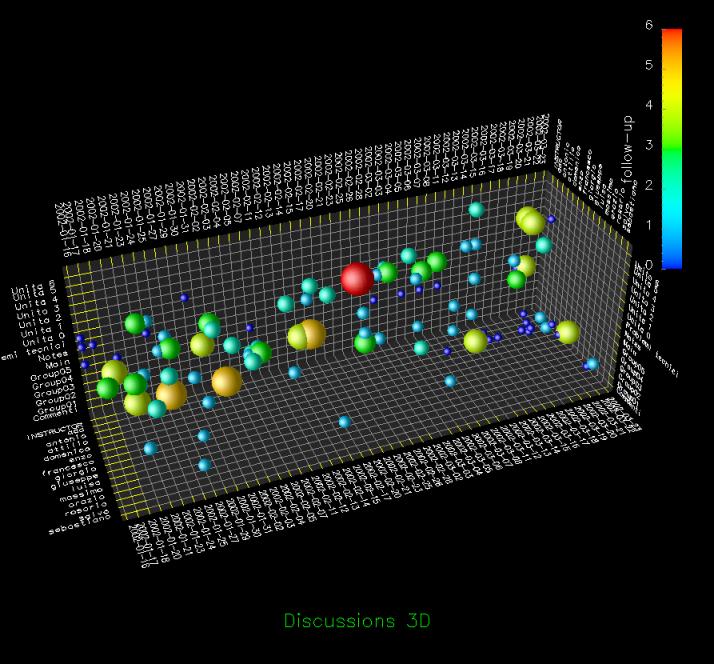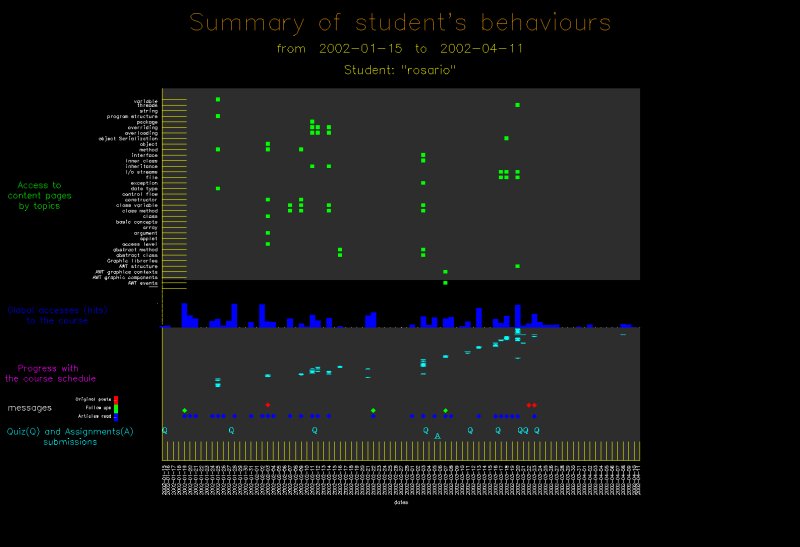Evaluating Information Visualization Applications: Difference between revisions
Jump to navigation
Jump to search
| Line 11: | Line 11: | ||
'''Access Plot:''' | '''Access Plot:''' | ||
[[Image:Accessesplot.JPG|center| | [[Image:Accessesplot.JPG|center|300px|Access Plot]]<br/> | ||
'''Discussion Plot:'''<br/> | '''Discussion Plot:'''<br/> | ||
This 3D scatterplot is about the disussions of the course. The figure shows time, topics and students. | This 3D scatterplot is about the disussions of the course. The figure shows time, topics and students. | ||
[[Image:Sozal_Aspects.jpg|center| | [[Image:Sozal_Aspects.jpg|center|300px|Discussion Plot]]<br/> | ||
| Line 21: | Line 21: | ||
This graph represents the behaviours of a single student. | This graph represents the behaviours of a single student. | ||
It shows the student's access to the content pages, the global access to the course, a progress with the schedule of the course, messages and the submission of quizzes and assignments. | It shows the student's access to the content pages, the global access to the course, a progress with the schedule of the course, messages and the submission of quizzes and assignments. | ||
[[Image:Behavioural_Aspects.jpg|center| | [[Image:Behavioural_Aspects.jpg|center|300px|Behavioural Graph]]<br/> | ||
== Important Citation == | == Important Citation == | ||
Revision as of 20:46, 26 April 2007
Author
Short Description
Figures
Access Plot:

Discussion Plot:
This 3D scatterplot is about the disussions of the course. The figure shows time, topics and students.

Behavioural Graph:
This graph represents the behaviours of a single student.
It shows the student's access to the content pages, the global access to the course, a progress with the schedule of the course, messages and the submission of quizzes and assignments.

Important Citation
attitudes, feelings and beliefs ... are more likely to be revealed
via the social gathering and the interaction which being in a focus
group entails [A. Gibbs, 1997]
formulate and answer questions [users] didn’t anticipate having
before looking at the visualization
[C. Plaisant, 2004]